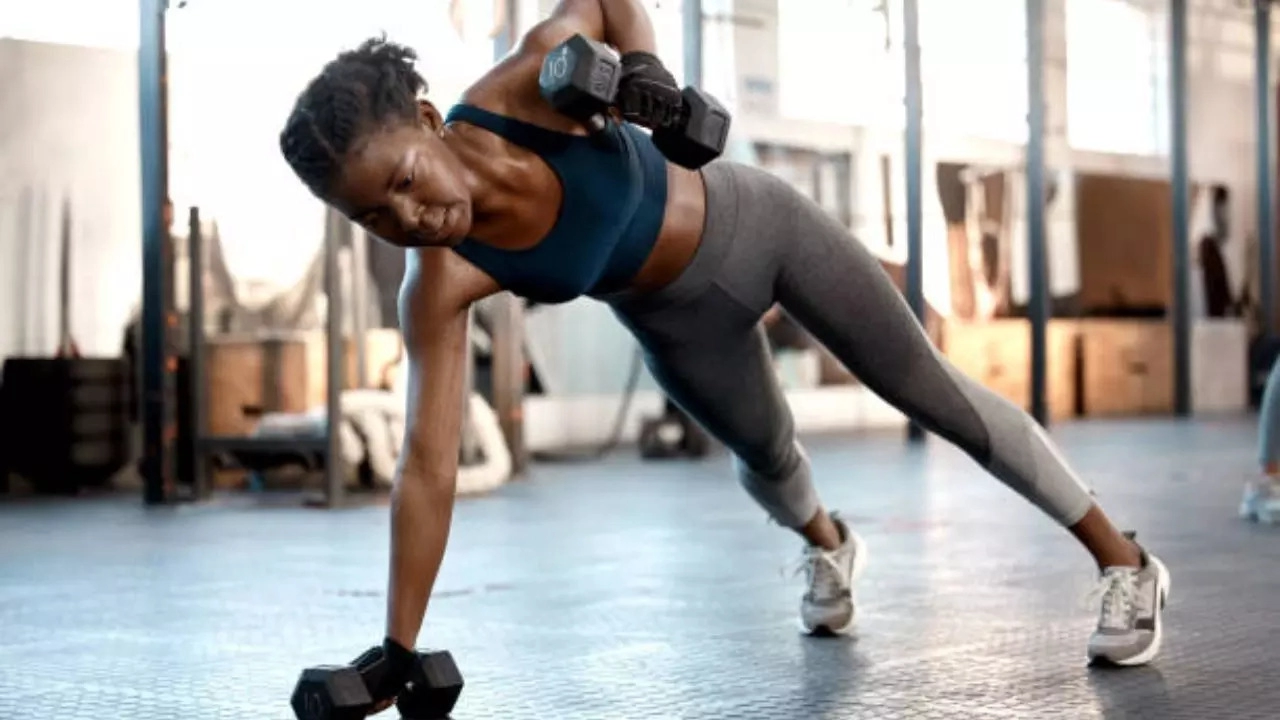Pallavi Mehra • 04 Aug 2024
5 Weight Training Exercises For Beginners To Do At Gym

5 Weight Training Exercises For Beginners To Do At Gym (Image Credits: iStock)
Starting a weight training routine can be both exciting and intimidating, especially for beginners. Weight training not only builds muscle but also strengthens bones, improves metabolism, and enhances overall physical fitness. However, if you’re a beginner then it might be tough for you to decide which exercise you should do and which you shouldn’t. Whether you're aiming to enhance your physical appearance, increase endurance, or support weight loss goals, starting with the right exercises is crucial. Hence, we’ve listed five weight training exercises for beginners to do at the gym.
Squats
Squats are a foundational lower-body exercise that targets the quadriceps, hamstrings, glutes, and core. They are excellent for developing leg strength and improving overall balance and stability.
How to Perform:
- Setup: Stand with your feet shoulder-width apart. Keep your chest up, and back straight, and engage your core.
- Execution: Bend your knees and hips to lower your body as if sitting in a chair. Keep your knees aligned with your toes. Lower until your thighs are parallel to the ground, then push through your heels to return to the starting position.
- Tips: Start with bodyweight squats to master the form. Once comfortable, you can add weights using a barbell or dumbbell.
Benefits: Squats improve lower body strength, enhance core stability, and boost functional fitness for everyday activities.
Rack Pulls
Rack pulls are a variation of the deadlift, targeting the lower back, glutes, hamstrings, and traps. They are performed with the barbell starting at knee height, making them an excellent introductory exercise for beginners.
How to Perform:
- Setup: Set the barbell at knee height on the squat rack. Stand with your feet hip-width apart and grip the bar with an overhand grip.
- Execution: Engage your core and lift the bar by straightening your hips and knees. Keep the bar close to your body, shoulders back, and chest up. Lower the bar back to the rack and repeat.
- Tips: Focus on maintaining a straight back throughout the movement to avoid strain.
Benefits: Rack pulls strengthen the posterior chain, improve grip strength, and help beginners develop proper lifting techniques.
Bench Press
Overview: The bench press is a classic upper-body exercise that targets the chest, shoulders, and triceps. It’s a staple in any weight training regimen for building upper body strength.
How to Perform:
- Setup: Lie flat on a bench with your feet firmly on the ground. Grip the barbell slightly wider than shoulder-width apart.
- Execution: Lower the bar slowly to your chest, keeping your elbows at a 45-degree angle. Press the bar back up to the starting position, fully extending your arms.
- Tips: Start with a lighter weight to master the form and ensure a spotter is present for safety.
Benefits: The bench press develops chest, shoulder, and tricep strength, contributing to a well-rounded upper body.
Plank Holds
Plank holds are an excellent exercise for strengthening the core. They target the abdominals, obliques, and lower back muscles, providing a solid foundation for more complex movements.
How to Perform:
- Setup: Start in a forearm plank position with elbows directly under your shoulders and feet hip-width apart.
- Execution: Keep your body in a straight line from head to heels, engaging your core and glutes. Hold the position for as long as possible without compromising form.
- Tips: Avoid sagging your hips or raising your buttocks too high. Focus on breathing steadily.
Benefits: Plank holds improve core stability, posture, and overall body strength.
Seated Rowing
Seated rowing is a compound exercise that targets the upper back, biceps, and forearms. It helps improve posture and strengthens the muscles of the back.
How to Perform:
- Setup: Sit on a rowing machine with your feet securely on the footrests. Grip the handles with an overhand grip.
- Execution: Pull the handles towards your torso, squeezing your shoulder blades together. Keep your back straight and avoid using your lower body to generate momentum. Slowly return to the starting position.
- Tips: Focus on using your back muscles to pull the weight rather than your arms.
Benefits: Seated rowing enhances upper back strength, improves posture, and reduces the risk of back injuries.
Get Latest News Live on Times Now along with Breaking News and Top Headlines from Fitness, Health and around the world.